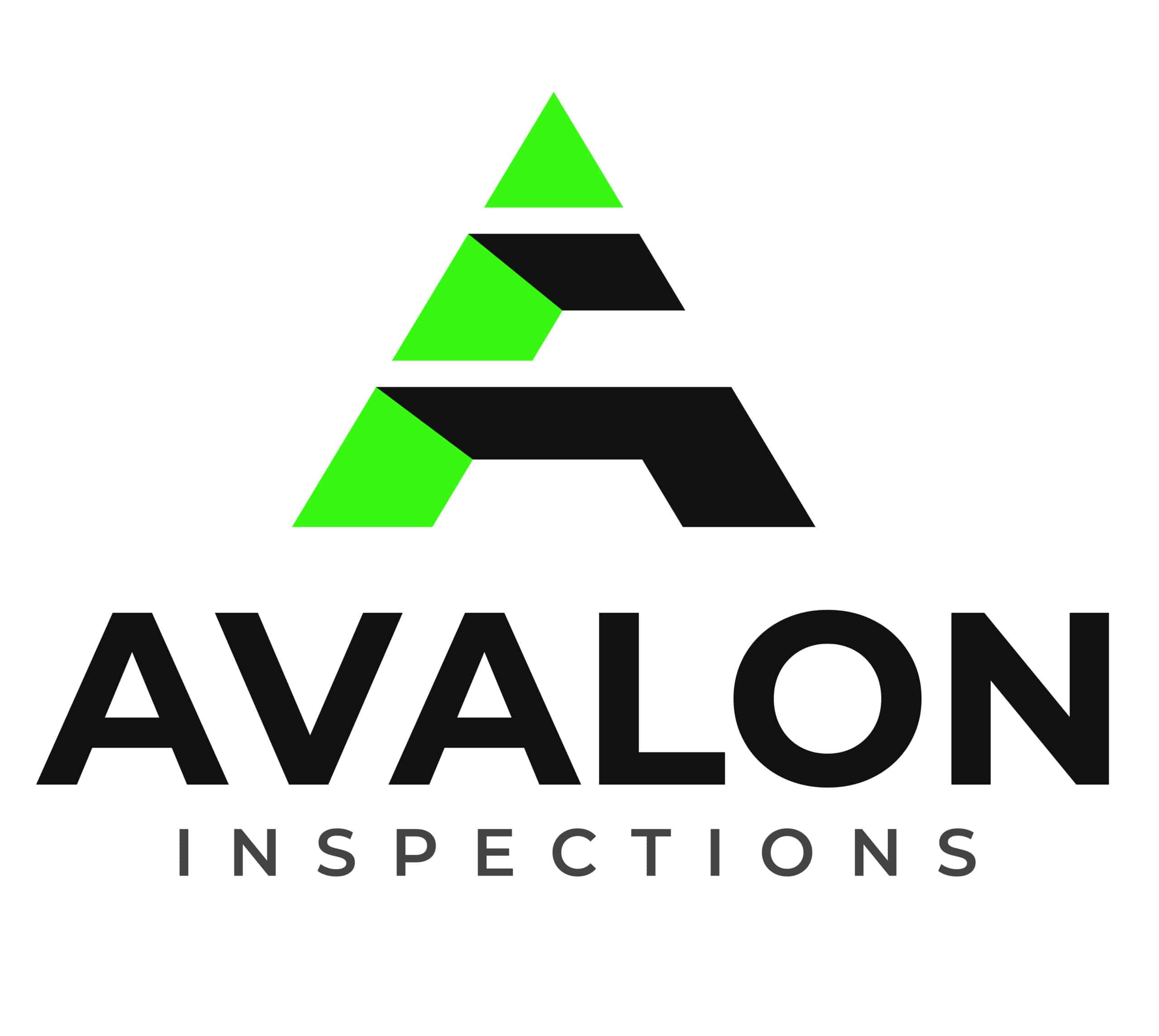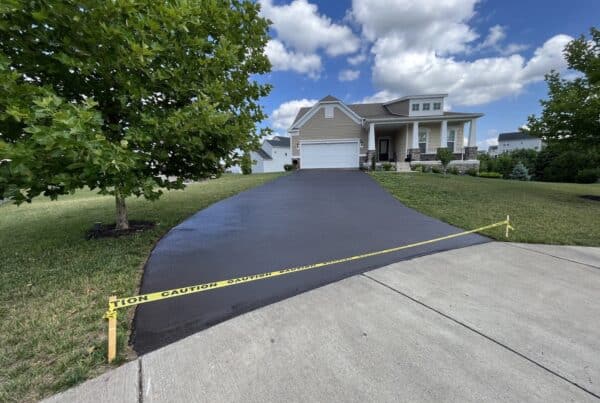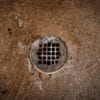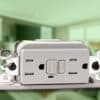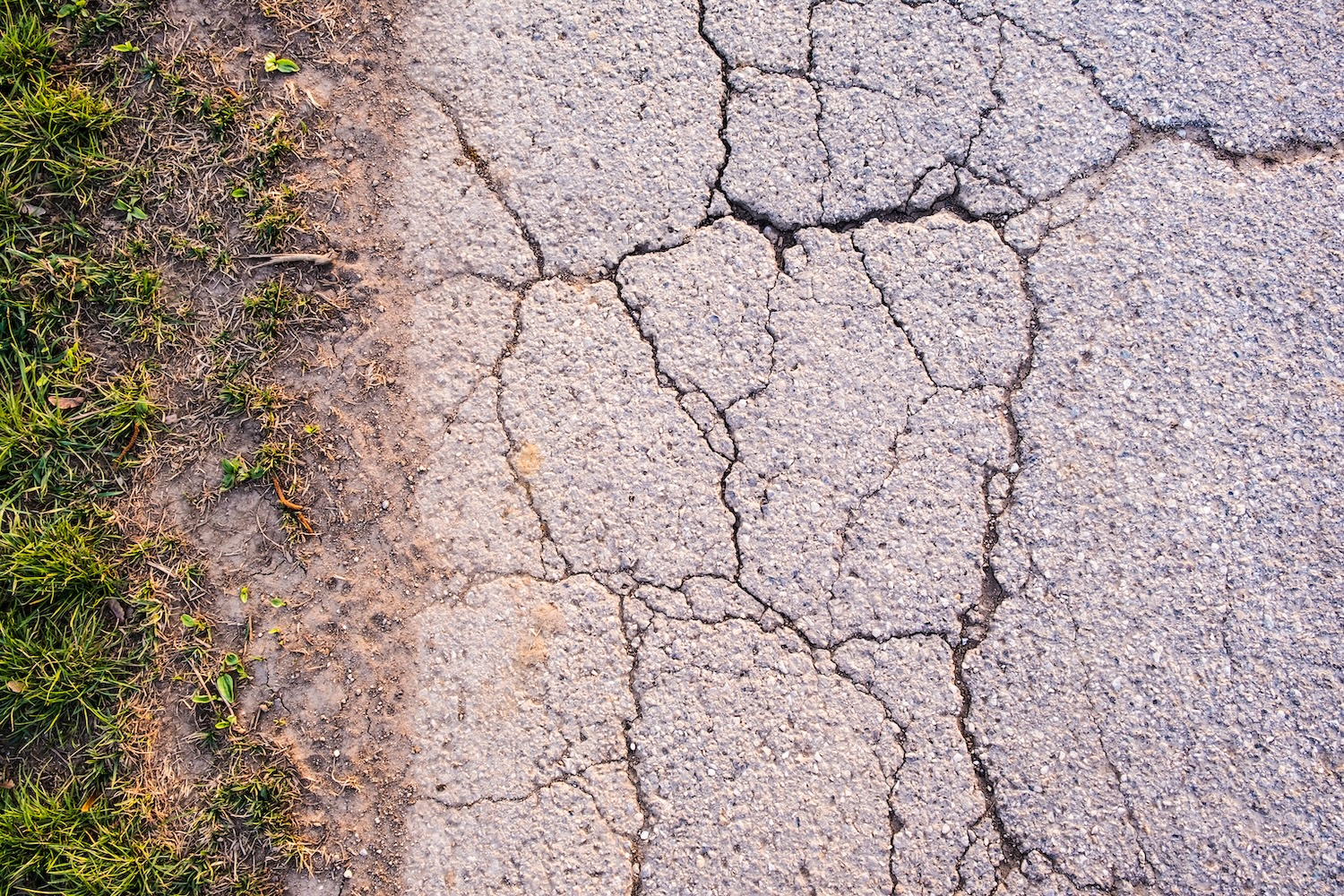
Cracks in a concrete driveway are one of those things homeowners tend to shrug off until they spread or start affecting property value. Driveways are exposed to moisture, heat, shifting soil, and tree roots, all of which can create visible cracking over time.
But not all cracks are the same. Some are cosmetic and easy to fix. Others signal bigger issues beneath the surface, like poor drainage, foundation movement, or structural settling.
If you’re seeing cracks in your concrete driveway, here’s how to understand what they mean, what may have caused them, and what you should do next to protect your home.
Why Concrete Driveways Crack Over Time
Concrete is one of the most durable materials used in home construction, but it doesn’t handle movement well.
It’s a rigid material poured over soil, which naturally shifts and settles over time. That movement, along with exposure to water, heat, and pressure, causes stress. Eventually, the concrete cracks to relieve that pressure.
Some of the biggest contributors to driveway cracking include:
- Expansive clay soils that swell with moisture and shrink during drought
- Heavy rainfalls or poor drainage that wash away soil beneath the slab
- Tree root growth pushing up from below
- Freeze-thaw cycles, especially in the mountains or colder regions
- Excessive weight, like work trucks or storage containers parked on the driveway
One inch of rain can deposit over 1,200 gallons of water on a 2,000-square-foot driveway
Understanding the source of the crack is just as important as fixing the surface damage. If the soil below isn’t stable, cosmetic repairs won’t last long.
4 Types of Cracks and What They Can Tell You
1. Hairline Cracks
These small, surface-level cracks typically appear as the concrete cures. They’re narrow and shallow and don’t change much over time.
What they mean:
These are common and not usually a cause for concern. They’re often a result of normal shrinkage as the concrete dries and hardens.
What to do:
Monitor for changes. If they begin to widen or deepen, it could mean movement is occurring below the surface.
2. Settlement Cracks
These cracks are wider and more uneven, often creating a slope or dip in the slab. They’re caused by the ground shifting or sinking under one part of the driveway.
What they mean:
Settlement cracks can indicate poor compaction of the soil before the concrete was poured or ongoing erosion beneath the slab. They often show up near garage entrances or areas with poor drainage.
What to do:
If the slab is sinking unevenly, you may need a structural inspection or concrete lifting solution, like polyurethane foam injection or mudjacking.
3. Heaving Cracks
These appear when part of the concrete is pushed upward, usually from below. They’re often jagged and create trip hazards.
What they mean:
Heaving is typically caused by tree roots or freeze-thaw cycles. In areas with colder winters, frost heave can push up the concrete. In warmer areas, large trees planted too close to the driveway are the more likely culprit.
What to do:
You may need to remove the root source or re-pour the affected section. Surface patching won’t work if the underlying pressure remains.
4. Expansion Cracks
These cracks run across large slabs where there are no control joints. They occur when the concrete expands in hot weather and has nowhere to go.
What they mean:
Expansion cracks are a sign the original pour didn’t include proper control joints or spacing. These joints are designed to absorb movement and reduce stress.
What to do:
Install new joints if possible or use flexible caulk or a self-leveling sealant to control further spreading.
When Is a Crack Just Cosmetic?
Not every crack signals a major issue. You can generally consider a crack cosmetic if:
- It’s under 1/8 inch wide
- It hasn’t changed shape or size in the last 6 months
- It’s not paired with sinking or heaving
- It’s isolated to the surface layer
Hairline cracks can often be sealed with concrete filler or patching compound. This protects them from water intrusion, which can freeze or cause further erosion underneath.
When Driveway Cracks Could Be a Bigger Problem
Some cracks can hint at deeper concerns that affect more than just the surface slab. You should be cautious if you notice:
- Multiple large cracks spreading across the slab
- Uneven surfaces that create trip hazards
- Cracks near your foundation, garage slab, or steps
- Water pooling in low spots or signs of erosion nearby
In some cases, what starts as a driveway issue could impact your home’s structural components, like porch piers or the garage floor. That’s why it’s important to consider a professional inspection if you’re unsure.
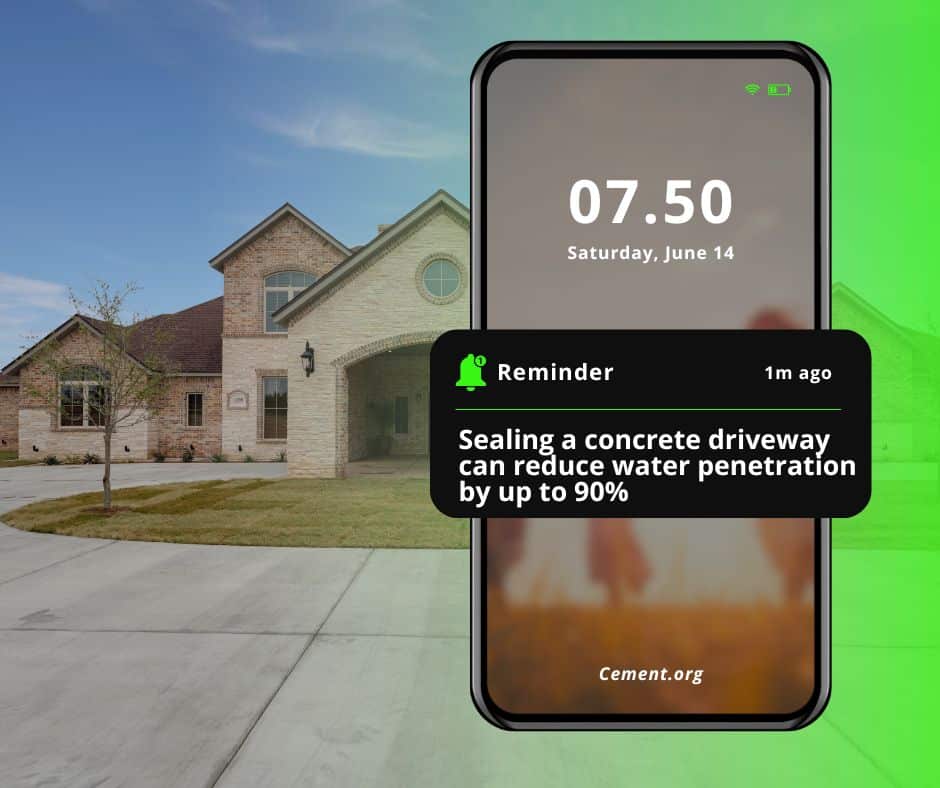
Preventing Future Driveway Cracks
While no driveway lasts forever, smart maintenance can extend its lifespan and prevent new damage. Here’s what we recommend:
- Seal your driveway every 3 to 5 years to protect against water, UV rays, and surface wear
- Keep the edges clear of weeds and grass to reduce root pressure
- Direct downspouts away from the driveway to prevent water saturation and soil erosion
- Don’t park extremely heavy equipment or vehicles in the same spot repeatedly
- Address drainage issues early to stop water from softening the soil underneath
When to Call a Professional
If you’re noticing multiple types of concrete driveway cracks or signs of movement, or if the slab is affecting nearby structures, a home inspection can help clarify the next steps. It’s especially smart to call a professional if:
- You’re preparing to sell your home and want to avoid repair flags
- You see cracks near retaining walls, steps, or foundation footers
- You’ve patched the same area more than once and the damage keeps returning
- You want peace of mind about what’s happening beneath the surface
At Avalon Home Inspections, our inspectors understand how soil and climate affect homes over time. We will help you understand what’s behind them and what to watch for moving forward.
Conclusion
Concrete driveway cracks are normal, but not all of them are harmless. The key is understanding what type of crack you’re dealing with, what caused it, and whether it needs repair or a closer inspection.
If your driveway is showing signs of wear, Avalon Home Inspections can help you get a clear picture of what’s happening now and what to expect later.
Schedule your inspection today and take the guesswork out of homeownership.
